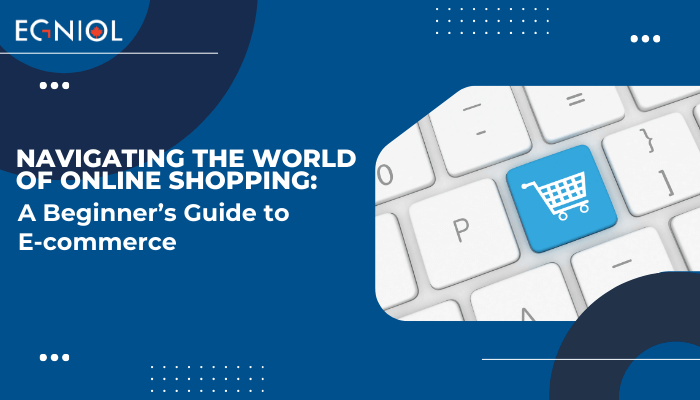In 2022, online sales in Canada soared to new heights, capturing nearly 10% of all retail transactions. This remarkable shift towards digital shopping isn’t just a trend; it’s becoming a lifestyle. The global e-commerce market is projected to reach USD 27 trillion by 2027, reflecting its integral role in modern commerce. In this blog post, we will guide you through the journey of e-commerce, its fundamental components, and its undeniable impact on various business models. We will also provide a detailed step-by-step guide on setting up an e-commerce platform, highlight the differences between e-commerce and traditional websites, and share some underrated but essential tips for succeeding in the online marketplace, with a special focus on the Canadian market and its global reach. Let’s dive in!
What Exactly is E-commerce?
E-commerce means buying and selling goods or services over the internet. From ordering a book online to subscribing to services, e-commerce covers a wide range of transactions. This digital shift has not only transformed how businesses reach and interact with customers globally but has also become a crucial tool for their growth and sustainability.
From Mail to Mobile: The Growth of Online Shopping
The roots of e-commerce stretch back to the 1970s with the introduction of Electronic Data Interchange (EDI) to replace mailing and faxing of documents. However, it wasn’t until the 1990s, when the internet was commercialized, that e-commerce as we know it began to take shape. Early pioneers like Amazon and eBay paved the way by creating platforms that allowed people to buy and sell goods online globally.
Fast forward to today, and e-commerce has evolved into a sophisticated platform capable of managing complex transactions including multi-vendor management, integrated marketing, real-time analytics, and much more. For instance, in Canada, companies like Shopify have revolutionized how local businesses engage in e-commerce, providing tools that manage everything from logistics to payments and marketing.
Online Store vs. Website: What’s the Difference?
While both e-commerce platforms and traditional websites are essential for maintaining an online presence, they serve different functions:
– Websites are typically informational, They provide details about services, company history, and contact information but do not facilitate direct purchases.
– Online Stores are transactional and designed to simulate a physical shopping experience. Customers can browse products, add items to their cart, and complete purchases all within a few clicks.
For businesses looking to sell online, an online store is indispensable.
How to Start Your Online Store: Step-by-Step
Launching an online store might seem daunting, but it is quite manageable with the following steps:
1. Plan Your Business: What will you sell, and who are your customers?
2. Pick Your Platform: Options include Shopify, WooCommerce, or Magento, known for their user-friendliness and features.
3. Make It Yours: Customize your platform to reflect your brand.
4. Accept Payments: Set up ways for customers to pay you, like credit cards or PayPal.
5. Figure Out Shipping: Decide how you will get products to your customers.
6. Tell the World: Use the internet to spread the word about your store.
Success Spotlight: Canada Goose
Take the iconic Canadian brand Canada Goose, known globally for its high-quality winter jackets and outdoor apparel. Originally a small warehouse operation, Canada Goose’s shift to online sales transformed the company into a global luxury brand. Their strategic move to adopt e-commerce allowed them to reach customers in remote parts of the world where their physical stores were not present. By showcasing their products online with detailed descriptions, high-quality images, and customer reviews, they provided a shopping experience that convinced consumers of the value of their high-ticket items. Today, Canada Goose’s online platform contributes significantly to its sales, proving the power of a well-executed e-commerce strategy.
Global Doors Open Wide: The International Reach of E-commerce
E-commerce isn’t just about selling locally; it opens up global markets to businesses of all sizes. Canadian companies can now reach customers across continents with ease, transcending the limitations of geography and local markets. For example, e-commerce platforms allow Canadian businesses to sell their goods in markets like Europe, Asia, and beyond without needing a physical presence. This capability to reach an international audience not only increases potential sales but also diversifies business risks and enhances brand recognition worldwide.
Secrets to a Thriving Online Store
Here are some less-discussed yet vital tips for e-commerce success:
– Make It Fast and Easy: Ensure your store works well on phones and loads quickly.
– Show Off Your Products: Use clear, high-quality pictures of your products.
– Get Personal: Offer personalized shopping experiences.
– Be There for Your Customers: Provide excellent customer support and simple return policies.
Why Selling Online is a Must
E-commerce breaks geographical barriers, enabling businesses to reach a global audience. This is particularly vital as the digital landscape continues to grow, with e-commerce sales accounting for a significant portion of global retail sales. In the context of Canada, with its vast geography and dispersed population, e-commerce enables businesses to reach customers country-wide with ease.
Ready, Set, Grow with Egniol Canada
E-commerce is more than just an online store; it’s a comprehensive approach to business in the digital age. Understanding the nuances of digital sales, continually adapting to new technologies, and responding to market trends are crucial for success. Egniol Canada offers customized e-commerce solutions tailored to your unique business needs, helping you navigate the complexities of online sales. Whether you are starting from scratch or looking to enhance your existing online presence, Egniol Canada can propel your business forward.
Join the e-commerce revolution today and see how Egniol Canada’s expertise can help your business thrive in the digital marketplace.
This guide is crafted to assist business owners, tech enthusiasts, and consumers alike in understanding the vast, evolving world of e-commerce. By adopting these insights and strategies, even the smallest enterprises can stand out and succeed on the global stage.
